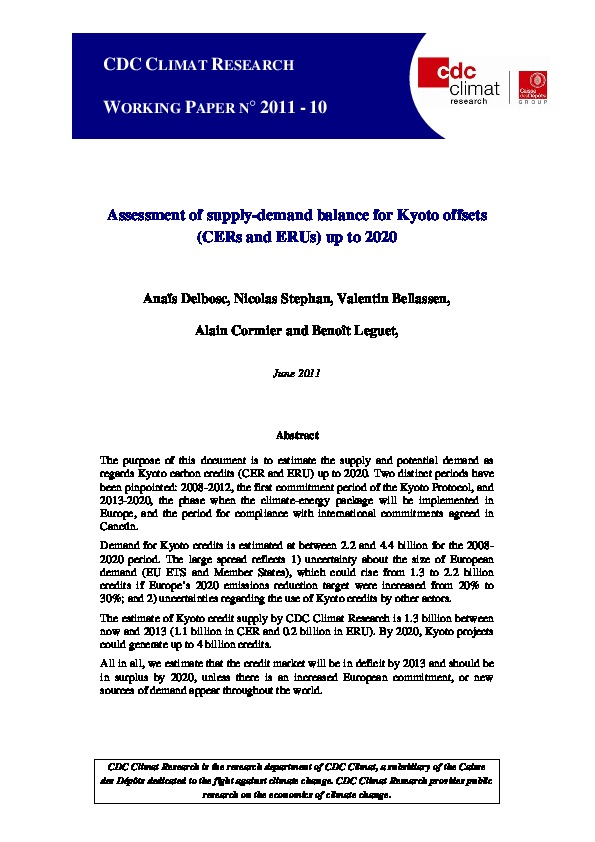Assessment of supply-demand balance for Kyoto offsets (CERs and ERUs) up to 2020
By Anaïs DELBOSC, Nicolas STEPHAN, Valentin BELLASSEN, Alain CORMIER et Benoît LEGUET
The purpose of this document is to estimate the supply and potential demand as regards Kyoto carbon credits (CER and ERU) up to 2020. Two distinct periods have been pinpointed: 2008-2012, the first commitment period of the Kyoto Protocol, and 2013-2020, the phase when the climate-energy package will be implemented in Europe, and the period for compliance with international commitments agreed in Cancún.
Demand for Kyoto credits is estimated at between 2.2 and 4.4 billion for the 2008- 2020 period. The large spread reflects 1) uncertainty about the size of European demand (EU ETS and Member States), which could rise from 1.3 to 2.2 billion credits if Europe’s 2020 emissions reduction target were increased from 20% to 30%; and 2) uncertainties regarding the use of Kyoto credits by other actors. The estimate of Kyoto credit supply by CDC Climat Research is 1.3 billion between now and 2013 (1.1 billion in CER and 0.2 billion in ERU). By 2020, Kyoto projects could generate up to 4 billion credits.
All in all, we estimate that the credit market will be in deficit by 2013 and should be in surplus by 2020, unless there is an increased European commitment, or new sources of demand appear throughout the world.

